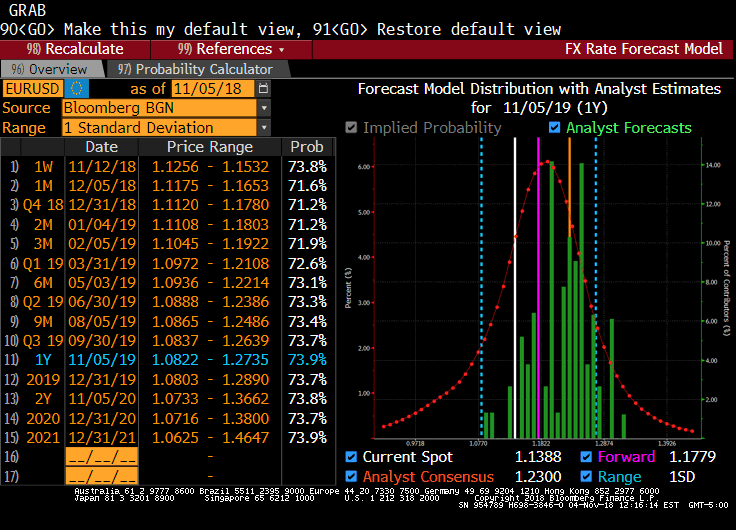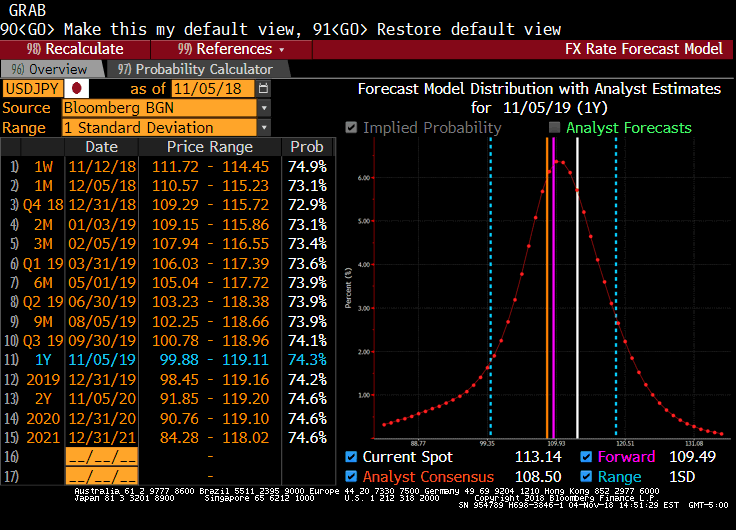| Broadly speaking, the risk is that the dollar’s cyclical advance is not complete. The drivers will likely remain in place through at least the middle of next year. Additional gradual interest rate hikes by the Federal Reserve and a favorable policy mix underpin the dollar. The Federal Reserve projects four rate hikes between now and the end of next year. Quarterly rate hikes through the middle of next year are the odds-on most likely scenario. By the middle of the year, the fiscal stimulus would have run its course, the accumulation of late-cycle behavior, warns the economy may begin slowing. A Fed pause in Q3 seems reasonable, which would suggest the removal of a headwind for the lira in H2 19.
The forces of divergence will also likely keep the dollar’s uptrend against the euro intact through the first half of 2019. The ECB has indicated it will not raise rates until after next summer. The most recent data has been disappointing. Although the ECB will end its asset purchases this year, officials still believe extraordinary monetary policy is needed. It is possible that before raising rates, the ECB offers another Targeted Long-Term Repo Operation, which would have the effect of lengthening duration on the ECB’s balance sheets. Europe faces three distinct challenges besides the economy. Italy is challenging the EU’s fiscal rules. It will likely be on-going pitch battle. Although a divorce agreement between the EU and UK is the most likely scenario, the risk of that no deal is struck is substantial. S&P warned that the failure to reach an agreement could push the UK into a recession. Also, it would be a negative knock on the EMU. European political officials are weak. Merkel is seen as a lame duck now that she has indicated she will no longer be the leader of the CDU. She wants to complete her term as Chancellor but ultimately is do not seem particularly likely. France’s Macron is nearly as unpopular as Hollande. Italy’s prime minister is overshadowed by his two deputies who head up the coalition partners. Spain has a minority government. There are European Parliament elections at the end of Q2 19. The Great Graphic at the top of the post contains a great deal of information. Based on current volatility, the euro will likely (73.9%) be between $1.0820 and $1.2740 in a year’s time. Because of the interest rate differentials, the 12-month forward is around $1.1780 (with spot near $1.1390), represented by the purple line. Analysts are bullish the euro, and the median (of the green lines) is at $1.23 (orange line). |
EUR/USD |
| The risks may be biased to the euro’s downside in the first part of next year. The fundamental considerations such as growth and interest rate differentials may push the euro into the $1.08-$1.10 area. A recovery, more substantial than a technical correction, may require positive developments such as a reacceleration of EMU growth and a slowing in the US sufficient to give pause to the Fed.
Analysts are also more bullish the yen than the dollar as the similar chart below illustrates. Based on current volatility, the dollar will likely (74.3%) be between about JPY99.90 and JPY119.10 in 12-months (blue lines). The probability distribution is represented by the red dotted line. Based on current interest rate differentials and a spot rate of JPY113.15, the 12-month forward is approximately JP109.50 (purple line). The median among analysts’ forecasts is JPY108.50 (orange line). The risk is that the dollar is more resilient than expected. The combination of yield curve control (10-year bond yield is now capped at 20 bp) and the reduced float (as the BOJ owns so much already) has seen the BOJ scale back new purchases of bonds (though the recent equity market decline has seen it step up its ETF purchases). The economy is struggling to maintain positive momentum and this is ahead of a sales tax hike next October (from 8% to 10%). In the run=up to the tax increase, there may be some durable goods purchases, but payback will be quick. |
USD/JPY |
Ironically, the implied volatility of the benchmark three-month euro-yen exchange rate (~8.5-9.0%) is higher than the implied vol of the dollar-yen (~7.0-7.3%) and euro-dollar (~7.15-7.35%). High volatility typically implies higher risk.
Japanese investors are often large buyers of European bonds and capital flows overwhelm trade flows. However, many Japanese institutions typically hedge the currency exposure of fixed income purchases. On such a currency-hedged basis, European bonds may be more attractive than a US Treasury, for example.
The euro has spent the last few months consolidating in a JPY124-JPY134 trading range. The general dollar direction is important. Euro sales against the dollar often weigh on the euro against the yen. The middle of next year is a potential inflection point. Fed policy pause. European Parliament election and new EC. Japan’s sales tax hike in October. ECB’s Draghi’s term ends in October. The forward for the end of 2019 is a little above JPY129. The median analyst forecast (Bloomberg survey) is for JPY135.
Full story here Are you the author? Previous post See more for Next postTags: #USD,$EUR,$JPY,Great Graphic,newsletter




























